
Metrolinx reveals gorgeous new public spaces and bridges for Ontario Line
Toronto commuters are learning more details about the 15.6-kilometre, 15-station Ontario Line subway that will connect Exhibition Place and the Ontario Science Centre (or at least the site it occupies today).
Metrolinx continues to tease the public with images of the new transit line, and hungry eyes got another taste of the future on Thursday evening during a community open house held at the Jimmie Simpson Recreation Centre.
The open house revealed the winning designs in a competition to reimagine public space along the Ontario Line's joint corridor with GO trains that will run through the city's east end.
A proposed "activity line" will add modern noise walls to dull the roar of trains, and line portions of the land abutting this corridor with pockets of tree-lined open spaces and cul-de-sacs.
This strategy breaks the shared rail corridor alignment into four sections dubbed The Confluence, The Urban Escape, The Backdrop and The Cultural Hub.

Zone 1, The Confluence, covers the stretch of track spanning from the Eastern Avenue Overpass Bridge to Queen Street East.
This area includes major changes proposed for Saulter Street Parkette, including a noise wall with wayfinding art to be commissioned for a local underrepresented artist, gardening plots and a basketball court.
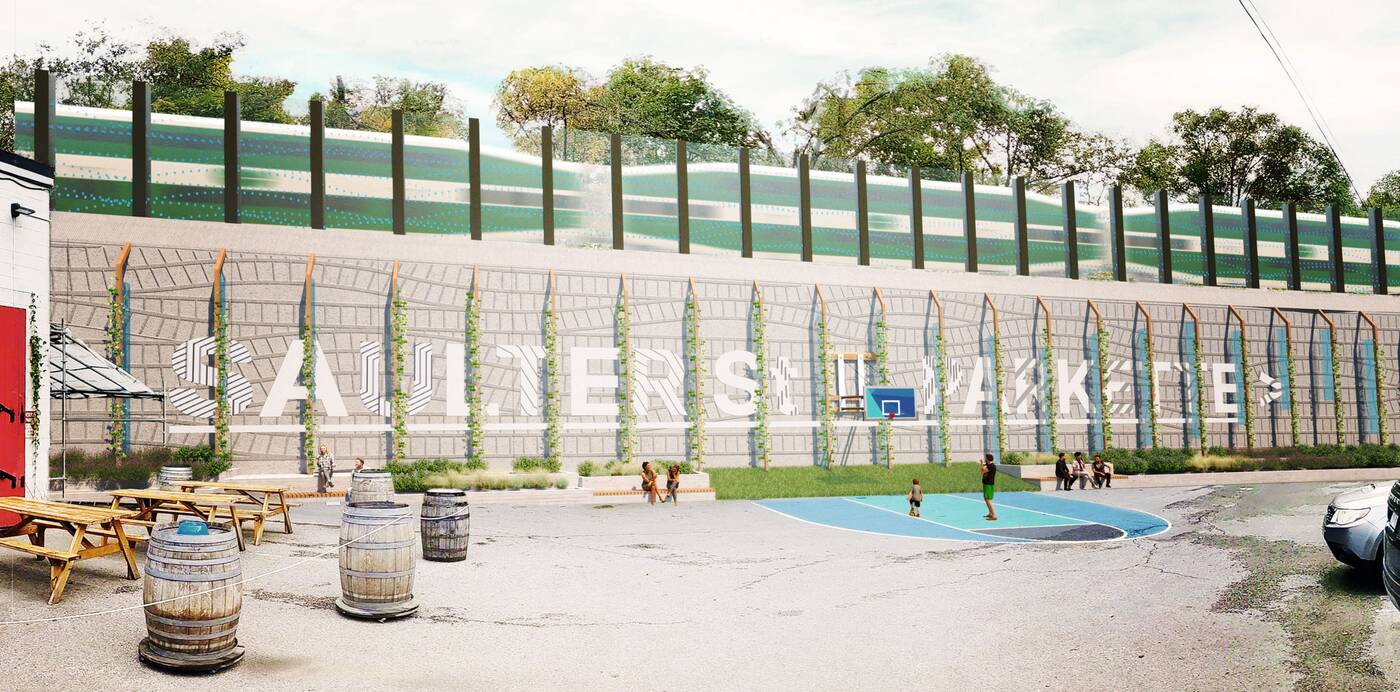
A kids' play area would retain the stumps of removed trees as climbable sculptures while reusing the remaining trees as mulch to preserve biomass.

Zone 2, The Urban Escape, includes the portion of the corridor extending from the Queen Street Overpass bridge to Dundas Street, an area home to Jimmie Simpson Park and Bruce MacKey Park.
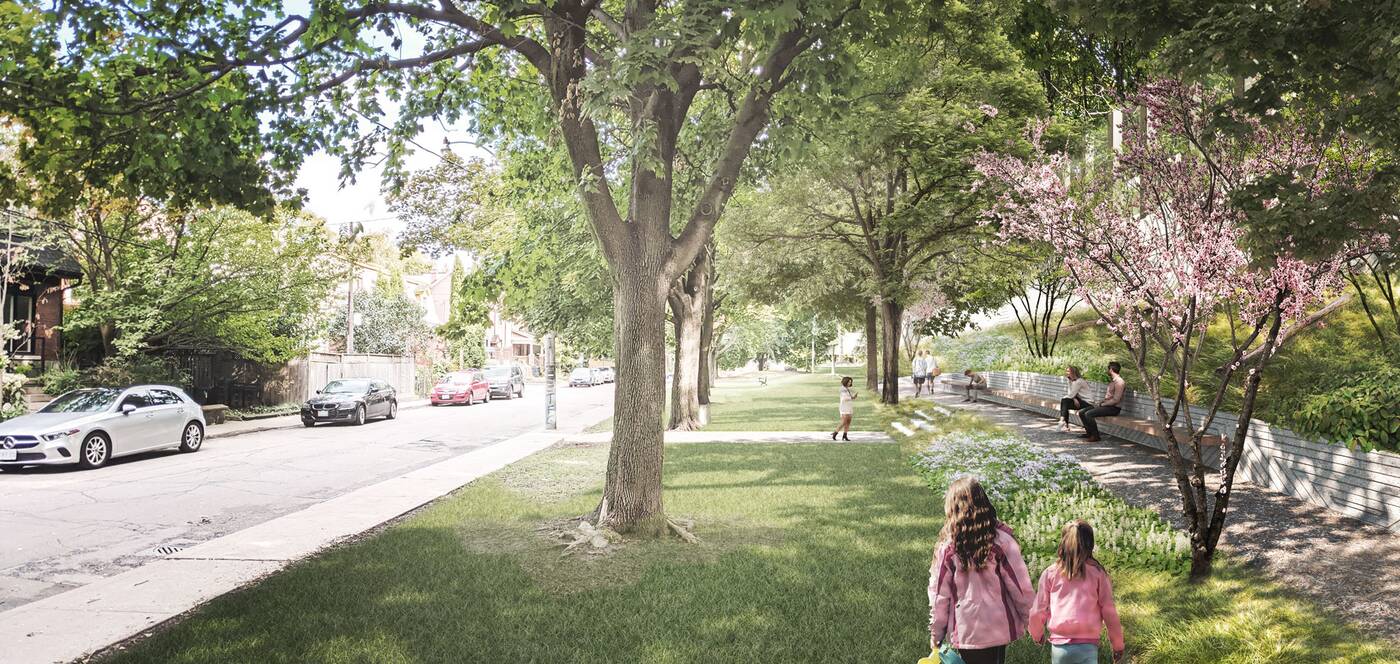
This area of the plan includes another instance of a kids' play area utilizing retained logs from trees set to be cut down for corridor expansion, as well as a revitalized splash pad making use of repurposed metal pipes as play structures.
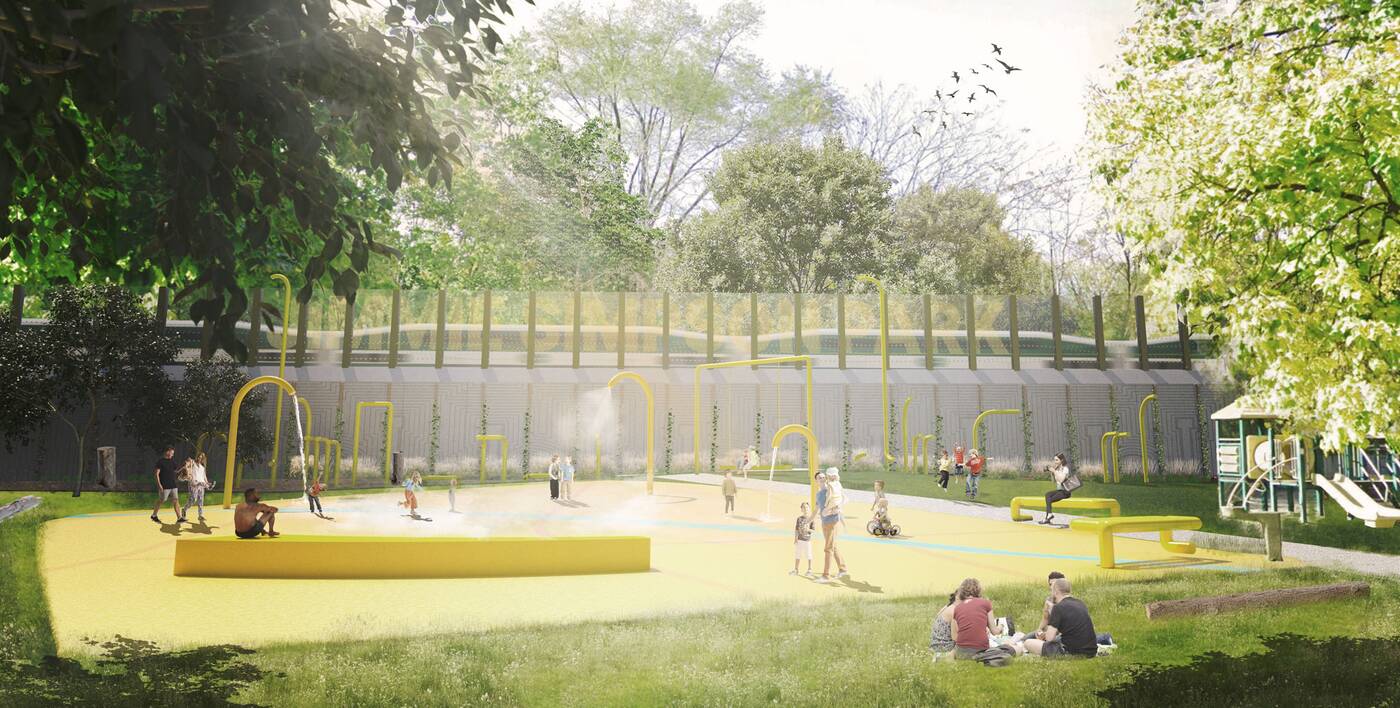
The third zone, The Backdrop, spans from Dundas St. to the proposed Gerrard Station Ontario Line platform. The design of this zone is heavily influenced by the delicate balance between the corridor and abutting residential areas and works primarily to conceal rather than embellish the rail infrastructure.
It states it will accomplish this, both visually and acoustically, through a combination of embankments, terraced landscapes, and owner-maintained vertical planting boxes.
This section of the route includes a bridge rendering depicting low-carbon wood slats and coloured lighting.

Zone 4, The Cultural Hub, constitutes the portion of the route running from Gerrard Station to Pape Avenue.
Metrolinx notes that this zone is treated with particular attention as it passes though established cultural communities and landmarks, including East China Town, the Real Jerk, and Little India.
It lives up to its name with some dynamic-looking rail bridge modifications, including placemaking signage.
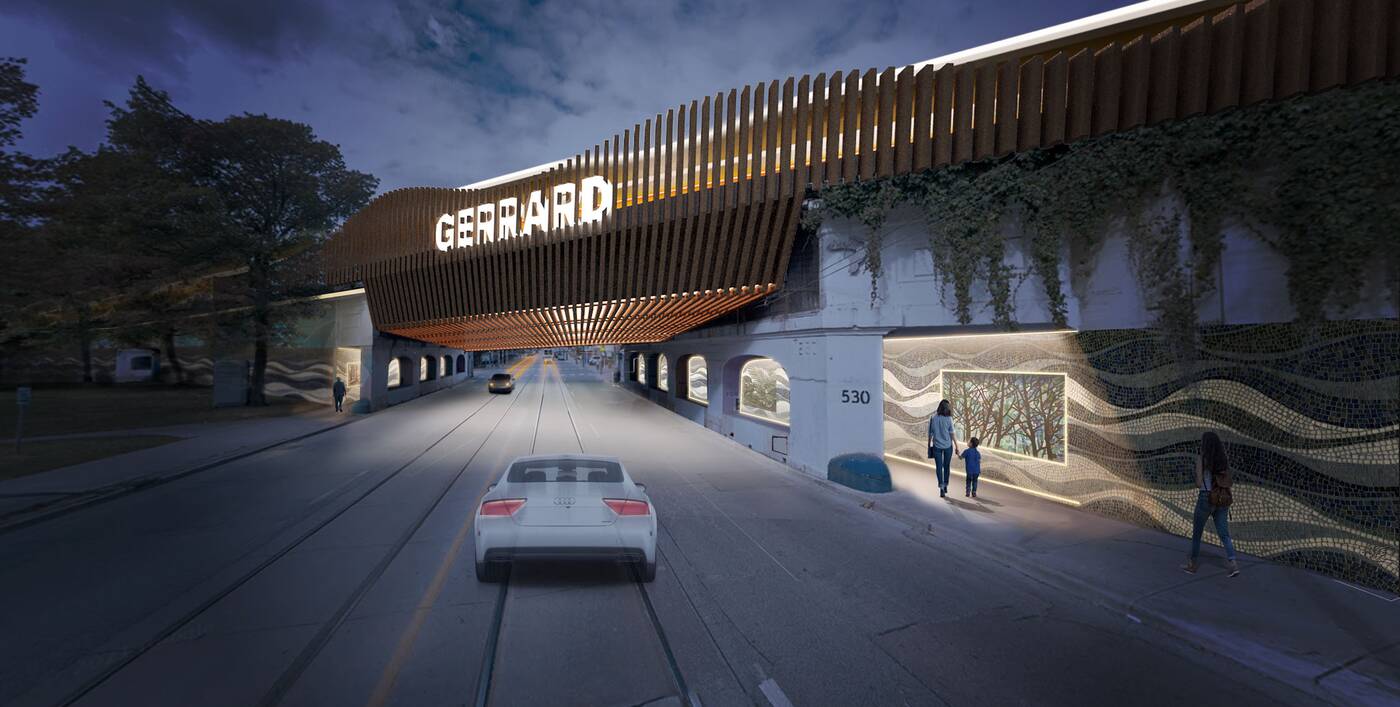
This expanded rail bridge would boast a proposed mosaic mural intended to promote storytelling and cultural identity in the area.
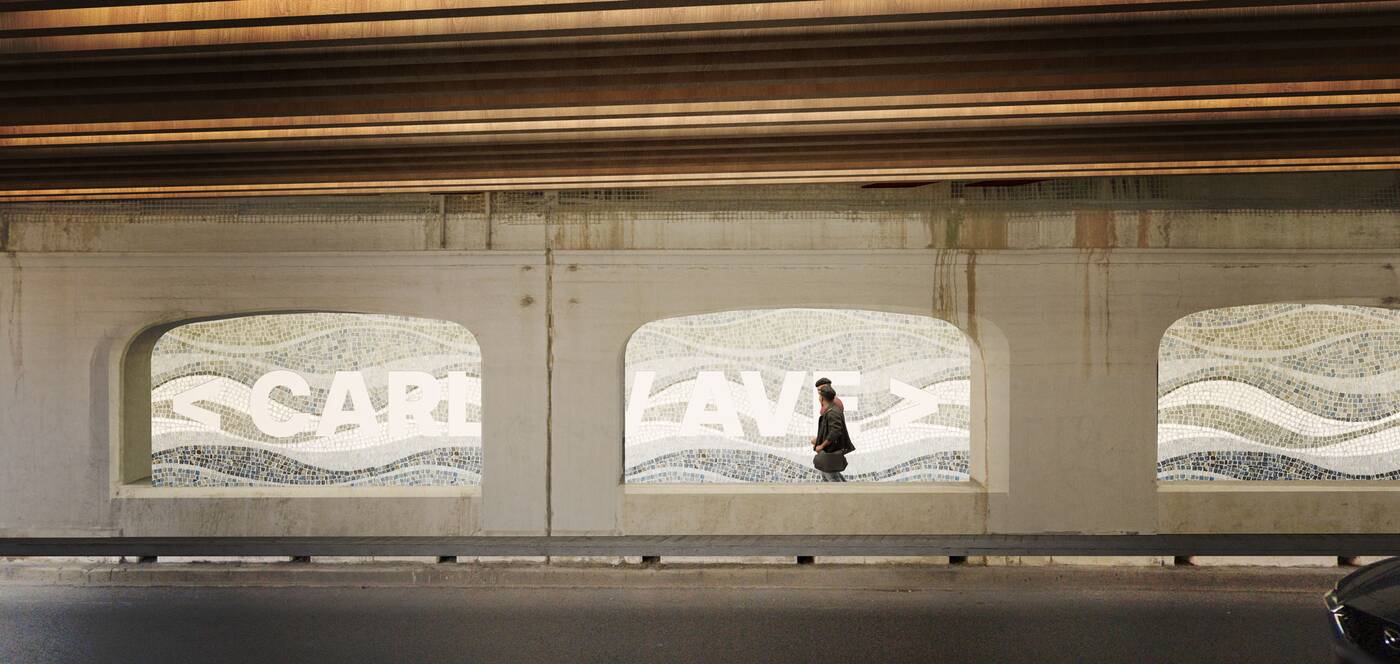
Other Zone 4 features include the potential activation of a small area along Carlaw Avenue, currently used as surface parking, with a new terraced planting and seating area designed to foster gatherings and offset the visual weight of the overpass.
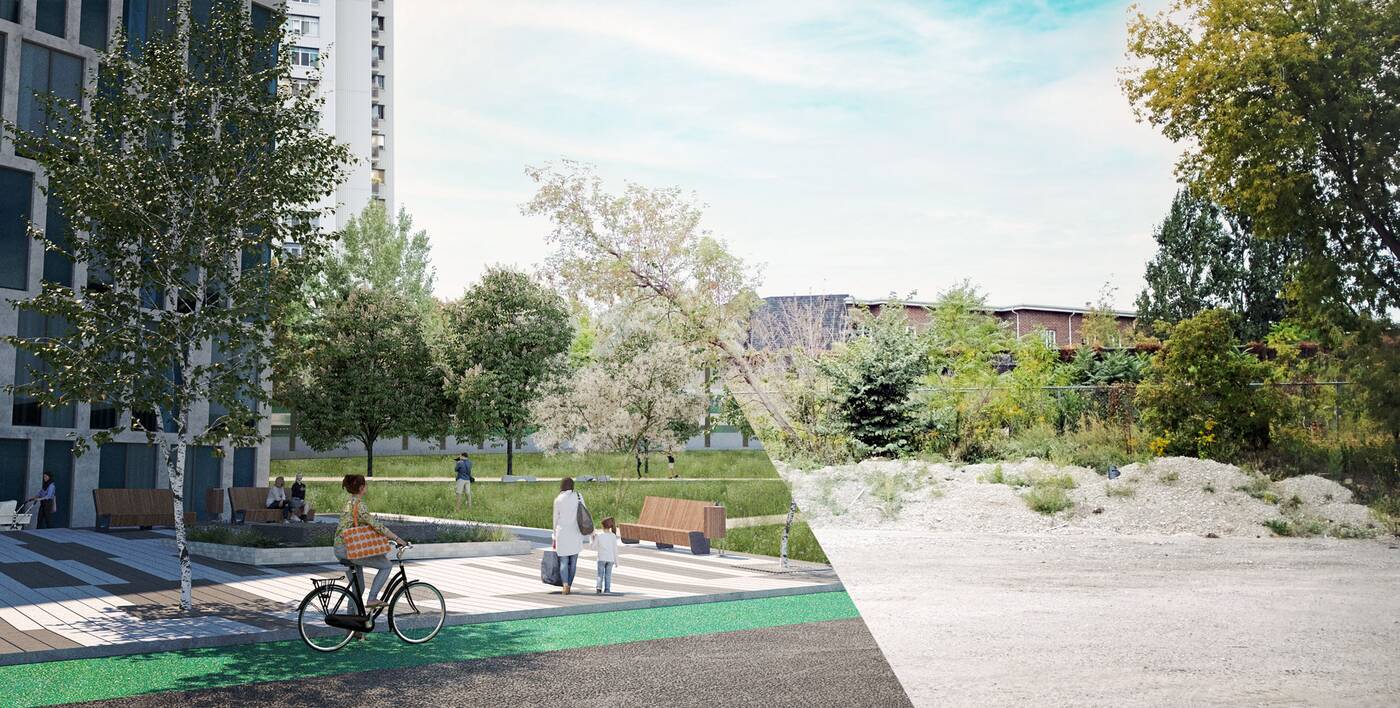
These changes follow intense organized local resistance to the Ontario Line's alignment, including protests in 2021 led by community activists alleging that the project would destroy several parks in their communities.
Groups Save Jimmie Simpson and Lakeshore East Community Advisory Committee were among those fighting the Ontario Line in its planning stages, claiming that it would result in the destruction of Bruce Mackey Park, Saulter St. Parkette and the Gerrard Dog Park.
Metrolinx
Latest Videos
Latest Videos
Join the conversation Load comments







